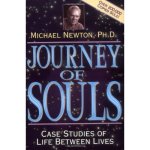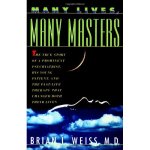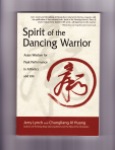Some parents and preschool teachers have noticed that young children will occasionally talk about another lifetime. It’s as if the veil between their last life isn’t fully drawn. The glimpses these children get into the past allows them to remember a small piece of another life. At other times they’ll remember their most recent past life in vivid detail. The child may startle their parents by saying something like, “When I was big . . .” or “When I used to be a nurse or fireman . . . .”
At other times they have nightmares or fears connected to their past lives. My niece would wake up crying at night. In a past life her family died in a fire while she slept overnight at a friend’s house.
In Children’s Past Lives: How Past Life Memories Affect Your Child Carol Bowman researched different studies on children who remember past lives. She takes the field of healing from past lives a step further by teaching parents how to help their child get over phobias from another life.
Bowman’s journey into this study began when her young son Chase suddenly became afraid of fireworks. Soon after, a hypnotherapist friend of hers, Norman Inge, came for a visit and Bowman mentioned her son’s fears. In an impromptu therapy session, Inge asked Chase what caused his fear of loud noises. Chase began to describe himself as a soldier carrying a gun with a sword on the end of it in the midst of battle, surrounded by smoke and flames. Eventually, he was wounded. Unlike adults, Chase didn’t needed hypnotic induction to remember his former life. After recalling his life as a soldier, Chase’s chronic eczema and phobia of loud noises went away. Later Chase remembered more about this fateful day in battle.
After his wound was patched up, he was sent back to the battlefield to operate the cannon and was killed. He floated above the battle, glad he was done with that hard life. Then he floated over his house and said good-bye to his wife and children. “They don’t see me because I’m in spirit, but they know that I’m dead.” (p. 24)
Bowman previously had a memory of a past life when she was very ill in this lifetime. Like her son, the remembrance helped her heal. In the experience Bowman states the following:
“I understood—really understood—that I was a part of something greater than the finite me. In a flash I realized that this energy I felt within myself could never be destroy—it would always exit. Only the body dies, while this essence that was everywhere but somehow still centered in my body continues forever.” (p. 34)
Bowman wondered why she was healed and came to understand that it had something to do with “recognizing patterns from the past and understanding how they carried over from life to life.” (p. 48)
Bowman’s inner question about what reincarnation meant for her present life was finally answered—directly and practically. “Re-experiencing my past lives released the grip of the past and gave me a fresh start in the present.” (p. 49)
Her interest in Chase’s experience led her to do extensive research on reincarnation. She found books by Dr. Edith Fiore, Dr. Helen Wambach and Dr. Raymond Moody. Wambach did experiments to prove past lives are real after having a spontaneous past-life recall. Wambach hinted that “The healing effect of recalling past lives is both powerful and universal. Just by remembering past lives, people could heal themselves of phobias. They didn’t even have to know it was possible.” (p. 64)
Fiore’s book You Have Been Here Before focuses on the healing benefits of past-life regression. She discovered an emotionally traumatic death is often the cause of the patient’s problems. Once the forgotten trauma surfaces, the patient’s symptoms begin to clear up.
In Dr. Raymond Moody’s book Life After Life, he describes near-death experiences similar to Dr. Fiore’s reports of patient’s descriptions of their death experiences during regression.
“Everyone who remembered dying described a continuation of consciousness after death; their awareness didn’t cease when their heart stopped beating. Their perceptions remained viable. They could see, hear, sense what was happening to them and around them . . .
“At the moment of death, they felt themselves leaving their bodies, suddenly feeling lighter, floating like a feather, rising up into the air, looking down at the scenes they had left below. . . . Many entered a celestial realm of bright light and bathed in its warm, loving presence.” (p. 68)
Bowman’s study led her to Dr. Ian Stevenson who wrote Twenty Suggestive Cases of Reincarnation and Children Who Remember Previous Lives: A Question of Reincarnation. The first book is full of cases where two- or three-year-old children recall, without prompting, enough details of a past life for his or her former identity to be established. Bowman realized that Stevenson was addressing the question:
“What survives bodily death? Thanks to his enormous lifelong effort, for the first time in the history of science we have objective evidence for proof of reincarnation—evidence that suggests strongly that something of our personality does survive bodily death.” (p. 110)
For thirty-five years Dr. Stevenson and his colleagues collected 2,600 cases in a range of culture and religions from around the world. (p. 112)
Bowman pursued training to do past-life regressions and began her work with children. Once when regressing her son Chase, she asked him “What happens after we die?” He explained:
“You can go back to a scene from the life you left and get any information you want to answer questions to finish up your life there. You can see what happens with the people you left behind. You can go back while you’re in spirit and say good-bye and see what happens to them in the future. If you see that all is well with them, this frees you to leave the Earth plane.” (p. 139)
Bowman decided to write a book on children’s past-life memories, so she placed an ad in a parenting magazine asking parents to share their children’s past-life memories. Colleen Hocken answered her ad.
Colleen’s three-year-old son remembered being hit by a truck and killed. This past-life memory was confusing because he couldn’t differentiate that life from his current one. Bowman gave Colleen techniques she could use to work with her son to “clarify” the painful events that happened in his past life. He needed to understand his current parents loved him and that he was hit by a truck while in another body. After having a conversation with his mother about his past life, the child’s face lit up. “You could just feel this incredible weight lift off him.” (p. 174) Colleen told Bowman. He became a happy, playful child again.
Colleen went on to say, “‘More people need to know that children can have troubling past-life memories and that their parents can help.’ She added, ‘I’m going to write to Oprah Winfrey to tell her about this.’” (p. 175)
This resulted in Bowman, her two children and Colleen Hocken appearing on Oprah to talk about past-life memories. People in the audience also shared some past-life memories from childhood. One woman shared the following (excerpted from Bowman’s book):
“When she was a little girl, she heard a single plane fly overhead, but had a vision of the sky filled with squadrons of planes coming to attack. She ran to her grandfather, screaming, “Run to the cellar, the bombers are coming!” (p. 187)
This story brought back my memories. Many times I’ll be peacefully gardening and hear a plane fly overhead. Instantly I have an urge to run into the house and hide in the basement. I suspect this stems from my own past life in World War II.
Bowman also shared her upset and unhappiness as a child at being sent away to camp. Upon further exploration, she discovered that her feelings came from her last life when she died in a concentration camp. This also lit up for me; when I was a child I had the same unexplained upset at being sent to camp.
Bowman states the following:
“Any child, anywhere in the world, can have a past-life memory, regardless of the cultural or religious beliefs of the parents. Most of those memories don’t cause problems. They are benign and are useful to help explain a child’s talents, temperament, behavioral quirks . . . they can forever change the most fundamental beliefs of the parents about death and life. For, by sharing their memories with us, small children teach what we adult have forgotten: that life continues after death.
“Sometimes, though, children have troubling memories from the past that create problems, such as phobias or physical ailments. These children may need help separating past from present—they may need to be told that the past life is over. Or if the memory is a sign that something from the past is unfinished, they may need help discovering what that unfinished business is in order to resolve it. They may need to examine their feelings and thoughts at the moment of death and be guided toward a resolution . . .
“For some children it’s even simpler than that . . . all the parent needs to do is simply acknowledge the truth of the memory and not deny it. Then the memory will run its course.” (p. 152)
The second and third parts of Bowman’s book are A Practical Guide to Children’s Past-Life Memories and Listen to the Children. These two sections give techniques parents can use to work with their children who have past-life memories. In the last section, Bowman explores the reasons people are afraid to publicly come out and say they believe in past lives. It may come from a past life where people were executed for having ideas outside church dogma.
If you have a child with a past-life memory you’d like more insight into or if you are fascinated by the topic, you’ll find Bowman’s book a well documented, thorough study that can transform your ideas about life after death.
Below is a You tube video interview with Carol Bowman
http://www.youtube.com/watch?v=k-MVcWEusW8











Recent Comments